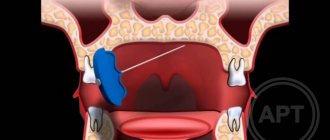Topographic cretinism is a person’s inability to navigate the terrain: from the inability to find a house using a navigator to a complete lack of understanding of “where I came here from and how to get back.”
In 2014, Norwegian neuroscientists even received a Nobel Prize for their discovery of the cells that make up the brain's orientation system. These cells react to three coordinates at once, like a GPS navigator, and give out a signal about where you are now and where to go next. Then experts hoped that this discovery would make it possible to create a medicine that, if taken, would allow one to better navigate in space.
The head of the psychophysiology laboratory at the Institute of Psychology of the Russian Academy of Sciences, Yuri Alexandrov, is skeptical about the results of Norwegian scientists.
“They conducted an experiment on rats, and based on this they could draw conclusions about people who have disturbances in this process. There are still a lot of experiments that need to be done that have not yet been done,” he comments.
Map in my head
When we walk over the same area every day for a long time, a cognitive map is formed in our heads - this is the scientific term for the construction of three-dimensional maps in the human brain, which allow us to quite accurately mentally visualize the route.
Interestingly, it is not necessary to see the road. So, in 1998, scientists from Russia conducted an experiment to find out how visual memory affects the preparation of a route in the head. Blind and sighted people took part in the study. They were divided into two groups (each included both categories), which spent 10 days exploring the territory: for only one group it was a familiar area, for the other it was completely new.
The researchers later compared the cognitive maps of each participant in the experiment. The results showed that sighted people had the most accurate maps in unfamiliar areas. However, in familiar territory, the blind were distinguished by the accuracy of the maps. The fact is that blind people cannot use visual orientation. In fact, they calculate their every step and therefore can then easily reproduce the entire route.
Training to get rid of topographic cretinism
There are many similar techniques, but let’s name a few of them:
- studying a map of the city, the area where a person lives;
- repeated repetition and memorization of the route, streets;
- orientation training through basic memorization of the view from the car, in what order the houses or streets are located;
- speaking out loud all objects that come across the path, be it even the simplest lamppost;
- drivers suffering from this disease are helped by the technique of memorizing road signs.
Special exercises for training the representation of the terrain
You need to open the map and study it carefully. Then you should take a pen, a sheet of paper and try to draw the segment of the path that you need to walk or drive. Here it is still necessary to distinguish who is studying the area and for what purpose. If a walker wants to get to know an unfamiliar area, a medium-scale map is best. If it is too large, the person will begin to be distracted by unnecessary details. But the main task is to familiarize yourself with the location of the streets, remember how they are located in relation to each other.
Dad and child drawing
After studying, you need to take a pen and a piece of paper and try to draw a plan of the required area yourself. Then you need to compare your drawing with the original. If there are errors, they must be noted and remembered. They represent the most difficult part of the journey for that particular person. Then you need to take a new sheet of paper and again draw the street diagram preserved in your head. And so on until the plan on paper becomes an accurate representation of the map. Usually this does not take very much time - 10-15 minutes.
Only for women?
No matter how we tried to dispel the stereotype that in most cases women suffer from topographic cretinism, it did not work - scientists only confirmed it to us. For women, the speed and efficiency of thinking does not always work with a bang when it comes to routes from point A to point B.
“The key visual-spatial functions in men are concentrated in the right hemisphere, but in women these functions are “spread out” across two hemispheres and this is not so effective,” said Tatyana Akhutina, Doctor of Psychology, specialist in the field of neuropsychology and psycholinguistics.
There is also an evolutionary explanation. Perhaps the cause of female topographic cretinism should be sought back in the cave era. Women in ancient times never had to hunt, go on long hikes, or navigate by the stars. These were men's tasks, while women sat in their dwellings and picked berries seven steps from the cave.
However, there are also men who cannot always find their way home on their own. One of these is Yuri Alexandrov, who therefore began studying this issue.
“I personally have topographical cretinism, and I know from my own experience how terrible it is when my wife leads me and shows me where to turn,” Aleksandrov laughs.
Sometimes parents can be to blame for topographic cretinism, both literally and figuratively.
When, for example, a left-hander is actively retrained, at some point he may begin to confuse right and left, and later he may even become a topographical cretin. In addition, genes may be to blame for impaired spatial orientation skills. So pay attention to your parents, there is a theory that the “disease” is inherited.
What has scientific research shown?
But now it has become known that spatial thinking in women is no worse developed than in men. This is the conclusion of scientists from the Irish University of Limerick.
For many years, scientific debate has not subsided over the disparity in the abilities of men and women to navigate the surrounding space. A minority of researchers considered these abilities to be equal. For this they were attacked that they were following the lead of various feminist and human rights organizations.
The results of the experiment, according to Irish scientists, dot the i’s in this long-standing scientific dispute. Previously, it was taken for granted that men have stronger spatial perception. For example, they can navigate better using maps. In particular, while female pilots were still rare, there were practically none among navigators.
Mental rotation tests were conducted. It was necessary to turn two-dimensional and three-dimensional figures in one's mind. These skills are related to spatial processing speed and general intelligence. For example, the scientific literature has previously shown that women and men perform differently on these tests. The pioneers in the study were Roger Shepard and Jacqueline Metzler, who from the early 70s of the last century began to develop and apply these tests.
The results of the new experiment were published in the journal Nature. The news was that men did not perform better on the tests. However, the researchers concluded that there are still differences. It turned out that men and women follow different paths in solving problems. But the result is approximately the same.
The researchers were prompted to this idea by tracking the subjects' eye movements during testing. In addition, changes in pupil diameters when solving problems were studied. And also the amount of brain resources that were involved in the execution of tasks.
Bad memory
If you can easily remember the name of your street and house number, the address of your grandmother, aunt and friend, then your memory is fine. But if you have to strain your brain and recall memories, perhaps your topographic cretinism is associated with poor memory. Psychologists advise making associations with any object you see on the road, or with the name of the street.
Read the names of the stores and build any chain of connections with their participation, for example: bookstore - Russian poet - Pushkin. By building such associative chains along the way, you can easily return back.
At first you will have to make an effort, but over time it will happen automatically.
How to determine the presence of a deviation in children of different ages
Children may suffer from the described disease with the following expression:
— Unstable and insufficient development of the muscular system and skeleton of the body; — Unstable blood circulation in the spinal cord; — Reduced quality of protein absorption in the body.
All this is determined visually at the moment of birth. Firstly, violations are often indicated by the child’s excess weight (over 4 kilograms). Secondly, the umbilical cord will take longer to fall off. Thirdly, the child’s body will be weak. The baby will constantly sleep and not want to eat food. His body will be weak, and the muscular system will not fully work and support the head and limbs.
It is very important at this stage not to confuse the general condition of the newborn child with that characterized by infantile cretinism. Visually, the disorder is also noticeable. The development of the body in this case occurs disproportionately. For example, the torso can increase in size, but the limbs do not. Also, fluid begins to accumulate under the skin and swelling appears. All this indicates a disruption of the endocrine system and it is necessary to immediately begin a comprehensive medical examination.
Inattention
Many people, walking in new places, are completely immersed in their thoughts or talking on the phone and do not consider it necessary to remember their route. Memory development specialist Larisa Chetverova advises practicing a simple exercise that will help improve attentiveness.
— Any abilities can be developed to a greater or lesser extent. You need to train your attention. Learn to write with both hands - this is a powerful exercise for developing memory: for example, writing “mom” with one hand and “dad” with the other. Definitely at the same time: one hand does not wait for the other,” Chetverov shares his advice.
Symptoms of cretinism
Signs of pathology may not develop immediately, but gradually. The disease progresses more slowly in those children who are breastfed. Together with milk, the baby receives a sufficient amount of thyroid hormones. The first symptoms appear at birth and then become more intense over time.
The main symptoms of cretinism:
- Physical development is impaired. Teeth grow slowly, and milk teeth change problematically. The child's growth is delayed, so he develops dwarfism. The physique is disproportionate, the head may be large, the limbs are short. The skull becomes deformed and protruding cheekbones appear. Bones and joints can also become distorted, which is why scoliosis often develops.
- Changing face. The features become coarse, the nose is wide with a sunken back. The eyes are spaced apart, the mouth may be open and the tongue may be hanging out and salivating. The facial expression is dull and the facial expressions are poor.
- Poor speech, as well as hearing, which can be in varying degrees of severity.
- Secondary sexual characteristics may not be sufficiently developed, and the same problem may also occur in the gonads; their function is impaired. Cryptorchidism is quite common.
- Internal organs develop poorly, so they are small.
- The skin is thick, pale, and in some cases the appearance of age spots is observed. Soft tissues may swell, and after age 20, the skin becomes wrinkled and less elastic.
- Often the hair has a dark shade, but there is a small amount of it. Nails are constantly breaking and sweating is reduced.
- Intelligence and mental development are impaired. This can manifest itself from slight debility and even idiocy - this is a severe violation. There are changes in behavior, drowsiness or weakness.
The older the child who suffers from cretinism, the easier the pathology will occur. The disease can be mild, so it will occur between two and five years of age, and may also occur during adolescence.
Reason 2. Genetic
The ability to navigate (or get lost!) in an unfamiliar place can be inherent in genes and aggravated (or, conversely, leveled!) by upbringing. Here gender does not play any role. If your mother, while walking around the neighborhood with you, periodically asked passers-by for directions, then you will most likely have problems of the same kind. We need to train! And be aware that your own children may have similar problems. If your parents were not pathfinders by nature, then you need to try to find and awaken your “inner Indian.” The main thing is to activate the right hemisphere of the brain, which is responsible for orientation in space. Of course, it’s better to start in childhood, but adults can achieve success too. This will help:
- music and drawing lessons (visual memory and visual perception develop, the right hemisphere of the brain is involved);
- aikido (three-dimensional thinking, both hemispheres of the brain are active);
- driving a car and forays into nature (there is a clear idea of the goal, and this helps to quickly understand where you are - see the next point)
Cretinism disease
If disturbances occur in a person’s nutrition and metabolism, cretinism may occur.
The disease cretinism develops for the following reasons:
- Insufficient amount of iodine in the mother's food while carrying a child.
- Hereditary predisposition.
- Lack of enzymes that are necessary to convert iodine into a biologically active form.
- Congenital problems with the development of the thyroid gland. This includes hypoplasia, athyroidism or ectopia.
- The thyroid gland is reduced in size for various reasons.
- Hormonal imbalance in the thyroid gland.
- The mother's use of medications during pregnancy that reduce the production of thyroid hormones.
- Living in a place where there is a constant lack of iodine in both water and food.
- Surgery to remove one part of the thyroid gland.
- Thyroiditis.
- The use of drugs that inhibit the functioning of the thyroid gland.
- Hypofunction of the thyroid gland in a child conceived from consanguineous marriages.
Most often, infantile cretinism develops if the mother has been diagnosed with iodine deficiency. In fact, experts cannot say exactly what exactly provokes the appearance of pathology. If the pathology is not treated in a timely manner, irreversible processes may develop in the nervous, respiratory, and cardiovascular systems.
Reason 3. No motivation
Whether we can get from point A to point B largely depends on motivation, or true desire. This is a very powerful stimulus for many of our actions, from trying to quit smoking to the ability to find ourselves in those very three pines. If we really need it, we will find it; if not, we will search until the end of time. Often manifestations of topographic cretinism are a reason to think: what are we even trying to achieve? Do we really need this? If you are unable to remember the simplest route, try to analyze - on your own or with the help of a psychologist - what is stopping you from reaching your goal? It may turn out that the matter is due to initially weak motivation - that is, in fact, you internally do not feel the need to navigate in space. For example, we are used to walking with a friend whose orientation is good and who will always lead you out. Or you just can’t remember the way to your in-laws’ house, to whom you really don’t want to go... You need to “feed” your motivation. If you need to get to some place, you need to tune in to this “quest” and concentrate as much as possible. This helps activate the brain and launch spatial imagination.










